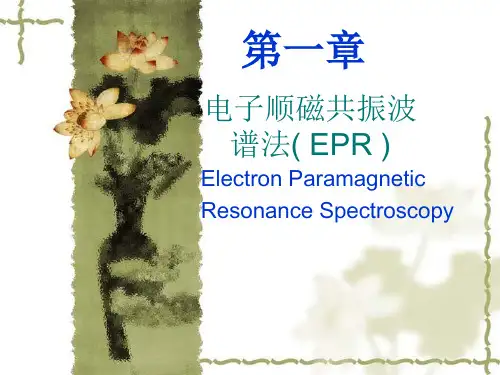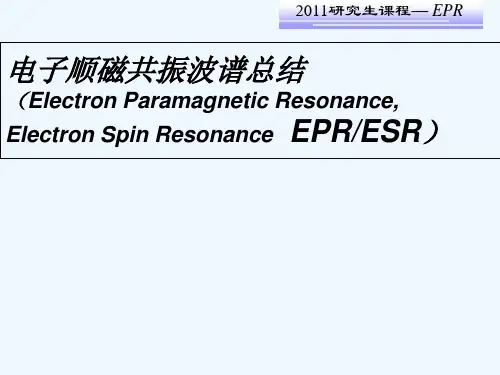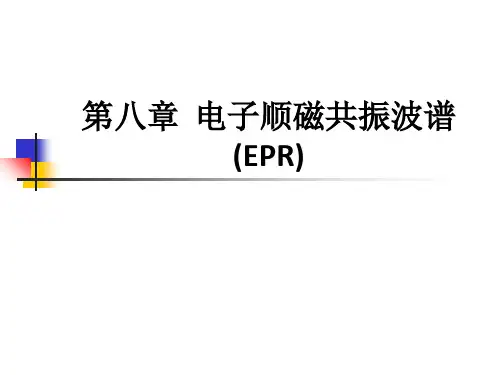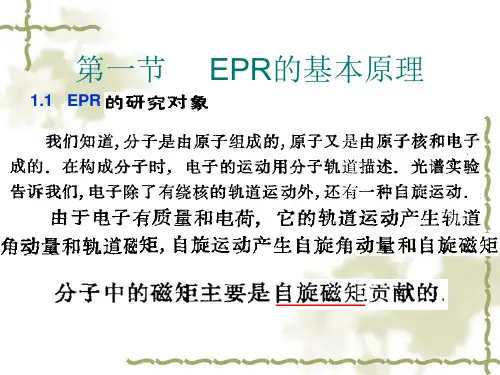1、微波系统
微波系统主要由: 微波桥和谐振腔等构成。
微波桥是由产生、控制和检测微波辐射的器件组 成,如:环形器、波导、可调节微波功率的微波衰 减器、晶体检波器及可以稳定微波频率将其自动锁 定在谐振频率的自动频率控制器 (AFC)等。
微波源:速调管(klystron)或耿氏(Gunn)二级管振 荡器;产生微波频率稳定、噪声低。
EPR—共振波谱仪
不管是矩形腔还是圆柱腔,都需要满足样品所处位置 的电场分布最弱,而磁场分布最强。 因此室温下,需要特别注意EPR管中水溶液的厚度。
水溶液厚度 L: ~几cm? X: <1 mm W: <0.1mm
矩形腔
flat cell
圆柱腔
EPR—共振波谱仪
微波共振:Resonance means that the cavity stores the
微波的产生、放大、发射、接收、传输、控制和测 量等一系列技术都不同于其他波段。
EPR—共振波谱仪
“微波”也称超高频,通常是指波
长为1m到1mm范围内的电磁波,
对 应 的 频 率 范 围 为 300MHz 到
300GHz,它介于普通无线电波与
红外线之间,在使用中为了方便
将它分为分米波,厘米波和毫米
波。如10cm波段 (S波段),5cm波
microwave energy; therefore, at the resonance frequency of the cavity, no microwaves will be reflected back, but will remain inside the cavity.
Cavities are characterized by their Q or quality factor, which indicates how efficiently the cavity stores microwave energy. As Q increases, the sensitivity of the spectrometer increases.








